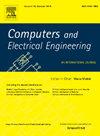A comprehensive survey on RPL routing-based attacks, defences and future directions in Internet of Things
IF 4
3区 计算机科学
Q1 COMPUTER SCIENCE, HARDWARE & ARCHITECTURE
引用次数: 0
Abstract
The Internet of Things (IoT) is a network of digital devices like sensors, processors, embedded and communication devices that can connect to and exchange data with other devices and systems over the internet. IoT devices have limitations on power, memory, and computational resources. Researchers have developed the IPv6 Over Low-power Wireless Personal Area Network (6LoWPAN) protocols to provide wireless connectivity among these devices while overcoming the constraints on resources. 6LoWPAN has been approved subsequently by the Internet Engineering Task Force (IETF). The IETF Routing Over Low-power and Lossy Networks (ROLL) standardized the Routing Protocol for LLNs known as RPL (IETF RFC 6550), which is part of the 6LoWPAN stack. However, IoT devices are vulnerable to various attacks on RPL-based routing. This survey provides an in depth study of existing RPL-based attacks and defense published from year 2011 to 2024 from highly reputed journals and conferences. By thematic analysis of existing routing attacks on RPL, we developed a novel attack taxonomy which focuses on the nature of routing attacks and classifies them into 12 major categories. Subsequently, the impact of each attack on the network is analyzed and discussed real life scenarios of these attacks. Another contribution of this survey proposed a novel taxonomy for classification of defense mechanisms into 8 major categories against routing attacks based on type of defense strategy. The detailed analysis of each defense mechanism with real life applicability is explained. Furthermore, evaluation tools such as testbeds and simulators for RPL-based attack and defense are discussed and critically analyzed in terms of real world applicability. Finally, open research challenges are presented on the basis of research gaps of existing literature along with research directions for practitioners and researchers. We believe our study will give actionable insights and solid foundation for researchers to expand effective defense solutions against emerging RPL routing attacks in IoT networks.
求助全文
约1分钟内获得全文
求助全文
来源期刊

Computers & Electrical Engineering
工程技术-工程:电子与电气
CiteScore
9.20
自引率
7.00%
发文量
661
审稿时长
47 days
期刊介绍:
The impact of computers has nowhere been more revolutionary than in electrical engineering. The design, analysis, and operation of electrical and electronic systems are now dominated by computers, a transformation that has been motivated by the natural ease of interface between computers and electrical systems, and the promise of spectacular improvements in speed and efficiency.
Published since 1973, Computers & Electrical Engineering provides rapid publication of topical research into the integration of computer technology and computational techniques with electrical and electronic systems. The journal publishes papers featuring novel implementations of computers and computational techniques in areas like signal and image processing, high-performance computing, parallel processing, and communications. Special attention will be paid to papers describing innovative architectures, algorithms, and software tools.
 求助内容:
求助内容: 应助结果提醒方式:
应助结果提醒方式:


